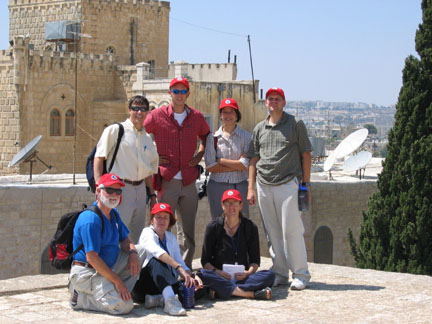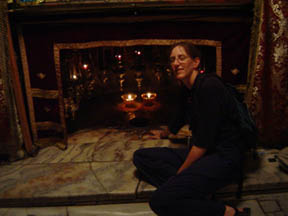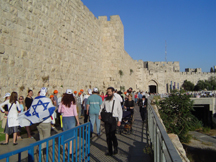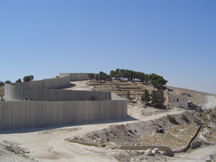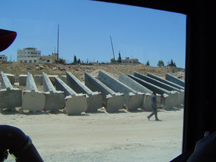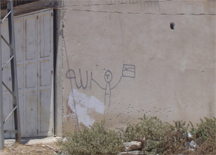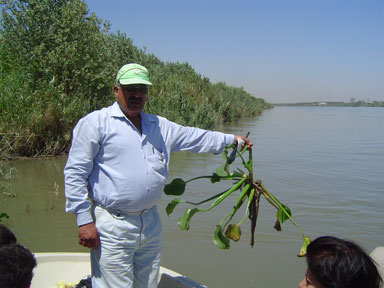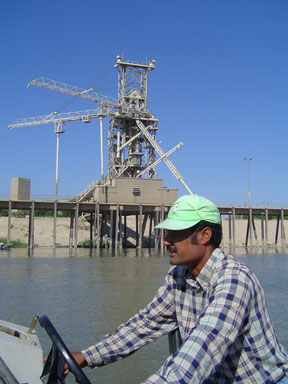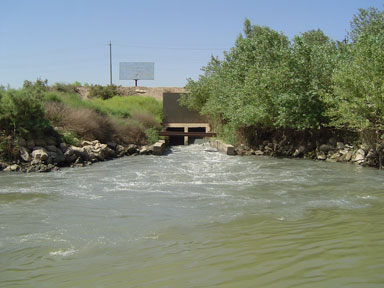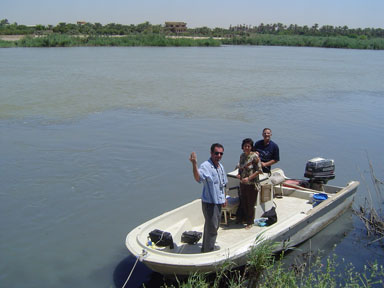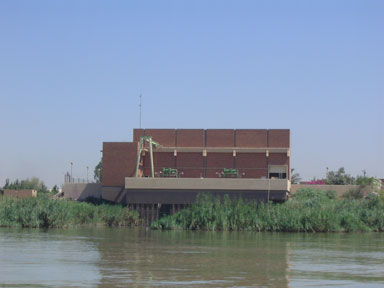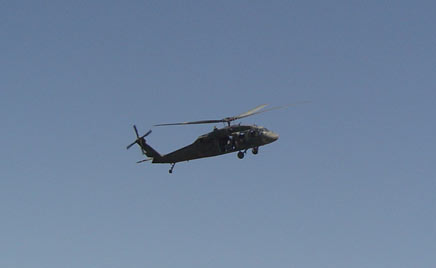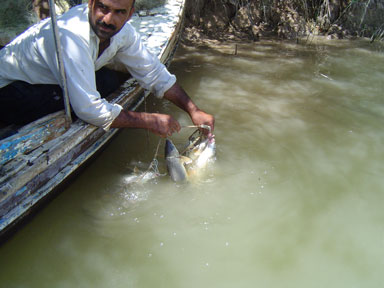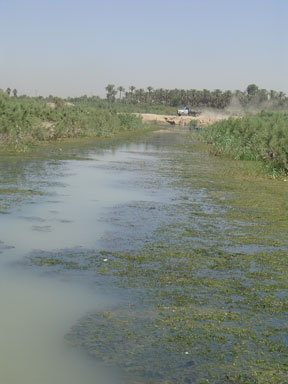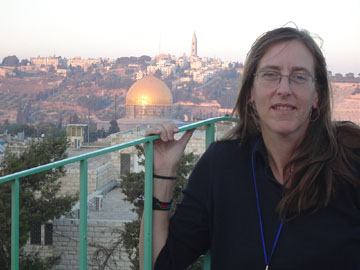It’s Just a Boat Trip
The morning promised to be a hot one and I was already having problems. People were having couldn’t find the drop off location. It’d spent two months trying to get this boat trip on the Tigris River ready and no one could find where it started. So I went up on the bridge and stood around like some hopelessly lost Westerner, a stranger in a strange land. Everyone gaped at me and honked their horns but it was better then any signed that read “Tigris River Project, Turn here!”
Finally everyone (or nearly everyone) had arrived. I had three staff from the Ministry of Environment’s Baghdad Office ready to take their first samples of Tigris River water since the war. I had representatives from three different Iraqi Environmental NGOs (aka. Non-Government Organizations): The Iraqi Green Peace Organization, the Iraqi Human Rights Association and the Green Iraq Organization. And I had reporters, photographers, and camera operators from major Arabic and Western Press who had come to document the first environmental survey of the river (there had been a previous attempt in March, which had ended badly with the Ministry engineers being shot at, dragged ashore, hooded and cuffed, interrogated, with their work of three days destroyed).
The goals of the trip were to help the Ministry conduct its survey; give the Iraqi Environmental groups some much needed exposure, and allow Iraqis a chance to travel down their own river (hopefully) unmolested. But there were a whole host of problems with this idea. First off the river is dotted with American/Coalition obstacles … Adhamiyah Palace military base, the Green Zone and the 14th of July Bridge. Special permission would be needed to travel past them. Secondly there was the problem of approaching sensitive installations like Water Treatment facilities to take samples … I faces hassles with security guards at numerous sites on all of the pre-surveys I had done prior to the final trip (usually these ended amicably but once there was a few particularly tense moments when I could hear quite clearly hear bullets being loaded into chambers). Then there was the resistance to consider, particularly on the lower river, which is filled with farms and has an isolated feel to it … a perfect place for insurgents to hide and strike from.
Luckily I was able to get the permissions I needed from the Ministry, the U.S. Military, and the Iraqi Police. I even had a police escort … the only problem was that at the start of the trip, the IP escort failed to show up! We proceeded down the river but immediately where hassled at the first Water Treatment Plant we passed (9-Nissan, one of the largest in the city). We took a hasty sample trying to ignore the plant guards who were trying to stop us and get us to approach and headed down river. Fortunately, the Iraqi River Police headquarters are near the first bridge we passed on the river. We stopped to inquire about our escort and were shocked to learn that they claimed to know nothing about our trip … and would further more need special permission from the GCC (though they never explained what the GCC was) to escort us! Two months of work and my trip felt like it was over before it had begun! Fortunately, I was finally able to get through to my IP contact on my mobile and he quickly settled the matter (or so I thought).
Eventually we were able to proceed down the river … we stopped at the Medical City and smelled the stink of sewage that the Medical City claimed was not their waste even though many people I spoke to indicated that it was and a boatman had told us of seeing medical fluid bags floating down the river. We zipped from sample site to sample site, the press conducting their interviews and then suddenly we stopped at another River Police station near the Sinic Bridge, just upriver of the Green Zone area.
“They need approval of the GCC to go further,” Mazin, my translator, told me.
Gritting my teeth, we waited another 20 minutes until our escort was freed to continue. Passing through the Green Zone was done at a careful, moderate speed, with occasional U.S. helicopters buzzing us overhead. We observed the smoking garbage dump that the Green Zone has created just outside their walls along the banks of the river and then we past, unmolested under the eyes of an Abrams Tank on the 14th of July Bridge. My heart was suddenly back down in its proper location.
Passing past the Jadriyah Bridge we came upon a river ceremony of the Sabea Mandean sect. Dozens of white-robed men and women came down to river to immerse themselves in the Tigris to re-enact the baptism of Jesus. It was an incredible photo opportunity and the reporters were clamoring off the boats almost before they hit the shore.
As the organizer of the trip I spent much of this stop watching the clock and insisting “Yalla, yalla!” (Hurry up!) to try to encourage the press to finish their interviews and get back in the boats. I was very conscious that the sun was baking us and we still had a lot of river to cover. Finally we shipped off and headed for Pn. Rainwater discharge station Pn consists of two huge pipes that spews raw sewage from the Khark side of the city into the Tigris River. Baghdad contributes as much as 75 percent of all sewage discharged to rivers in Iraq. There are three Sewage Treatment Plants in Baghdad: Rustimiyah North and South and the Khark Waste Water Plant. Only the Khark Plant is functioning but just at about 1/3 of its capacity of 205,000 cu. meters per day. It’s important to remember that actual sewage flow to the plant appears to be beyond its design capacity. Sometime in the 1990’s the rainwater and sewage networks of the city were connected, so that discharge stations like Pn bring a lot of the excess sewage directly to the river untreated. These discharge stations and all the pipes bringing waste water to the river from streets, industries and private homes is a big problem on the Tigris.
After Pn, we visited the Doura Power Plant, its big rectangular outfall bringing waste coolant water to the river. Occasionally it is also a source of oil pollution to the river which complicates the treatment just down river of drinking water at the Doura Water Treatment plant where we took one of our samples.
Passing further down the river, we passed The Qadisiya, one of many wrecked and derelict boats on the river. The Qadisiya was a large yacht, now mostly stripped of everything useful and grounded near the University of Baghdad Campus in Jadriyah. A river man told us that it had been a gift in 1998 from the Emir of Kuwait to Saddam Hussain.
On our way to a more industrial area of Baghdad, our boats first past along the big homes and palaces of the former regime, under the Double Decker Bridge and on to what would prove to be our last sample site, a rainwater/sewage discharge station near Jser Kabir and a big Soap plant. As we approached the site, a call came in on my mobile.
It was Major Basim, my Iraqi Police contact.
“We’re getting a lot of calls about you,” he said, “We think it is too dangerous for you to proceed. You need to stop and turn back.” The south side of the river here is generally known as Doura. It is filled with farms and isolated houses. It is also considered a dangerous area that the Resistance uses to launch mortar attacks on the Green Zone.
I tried to make a case with the Major that I had done this lower section of the river before with no problem. But even I had to admit that three boats with flashy canopies and filled with Iraqis and Westerners … not to mention our police escort, was drawing a lot more attention than was probably safe. In many places were we stopped to take our samples, it seemed a small crowd would form. The NY Times reporter indicated that we even got applause but I was too busy directing the boat drivers and by this time too upset at the thought of cutting the trip short to really notice what was going on beyond the boats themselves. I’m told at this point we had three police boat escorts … given that it was so hard to get them to join us at the beginning I had to laugh about this later.
“I really want to get to this last sample site, Major Basim,” I told him over the sound of the engines, “It’s so close. If we can at least do that, we’ll turn around.”
“Ok, it’s your call,” he said and I hung up, feeling a mixture of sadness but relief as well. We wouldn’t get down to the confluence of the Diyala River to the Tigris, which had been my target, but we would get our last sample and we’d done the majority of the river. The press was happy with the story they had and so after the last site, I waved a green flag and directed the boats to take us back to our drop off point.
We were arriving two hours in advance of our final Press Conference, which I’d scheduled to take place at 2 pm at the large home of Sayid Ayad Jamal Al-Din (Sayid is a title of honor given to decendents of the Prophets family). A controversial cleric in his own right (He’s a shia cleric that calls for a separation of religion and state), the Sayid had graciously opened up his river-side home for me to use. I had invited officials from the Ministry of Environment as well as press that could not make the boat trip to join us there (unfortunately the former did not come for reasons that are still not clear to me).
Exhausted and hot, we walked into the cool, chandeliered living room of the house for a final wrap up. I can’t recall my exact words, but I presented one of the flags we had made for the trip to the Ministry staff. Baraa, an engineer from the Ministry, told us that the samples would go to the Ministry lab and they would pass on the results to me (I’m still waiting!) and each of the Iraqi Environmental NGO’s said a few words about their work. More press showed up and we conducted a few additional interviews by the river. It seemed odd to be treated like I’m some expert on the Tigris River. A river that is essentially older the civilization can have no real experts. But it can have lovers and I think that is what I’ve become.
Finally, after the ministry staff had left (in taxis since the Ministry doesn’t have cars to pick them up), the NGO’s were gone and the press had slowly filtered out, I cleaned up the mess we’d made and headed off to find my bed! The boat trip was over.
